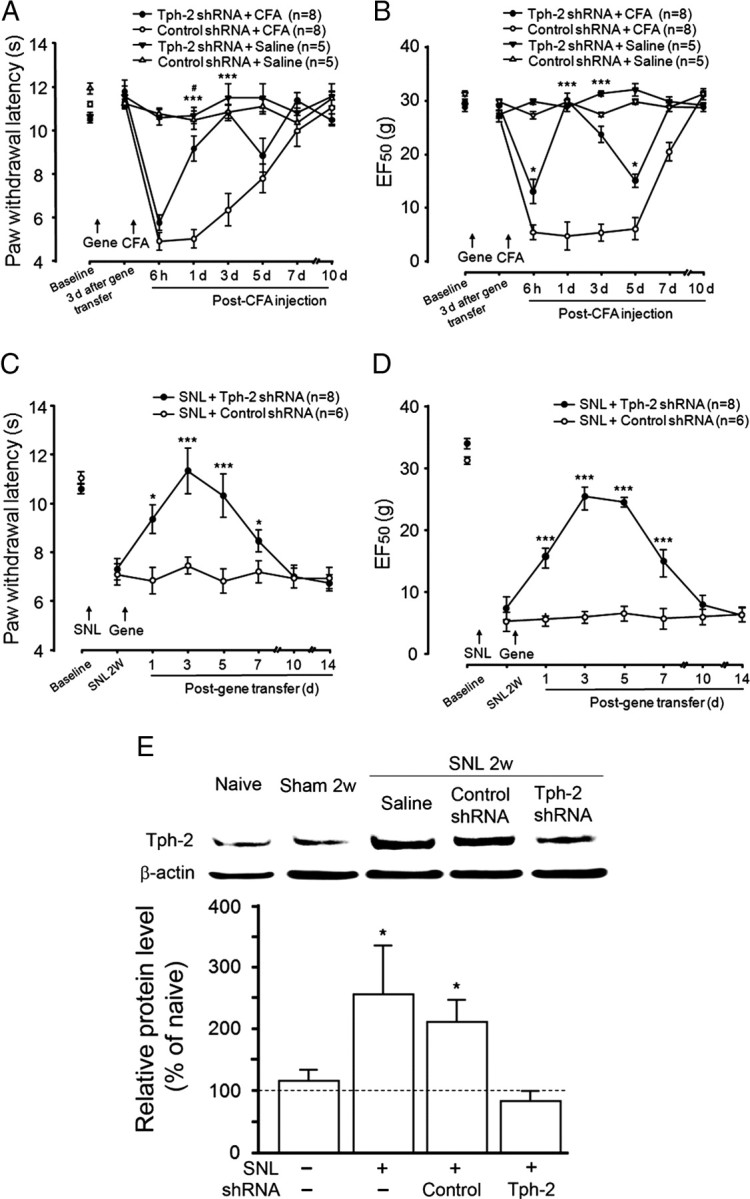Figure 5.

Attenuation of behavioral hypersensitivity and enhanced Tph-2 in the RVM in rats with RVM 5-HT depletion after hindpaw inflammation and nerve injury. Significant attenuations of thermal hyperalgesia at 1–3 d but not 6 h and 5 d after CFA-induced peripheral inflammation by pretreatment of the 5-HT depletion compared to the control shRNA-treated rats (A). RVM 5-HT depletion completely eliminates or attenuates of mechanical hyperalgesia and allodynia at 1–3 d or 6 h and 5 d, respectively, in rats with inflammation compared to control treatment (B). Long-lasting reduction of thermal hyperalgesia (C) and mechanical hyperalgesia and allodynia (D) from 1 d to 7 d by posttreatment of the 5-HT deletion followed 14 d nerve injury. E, Western blots showing that Tph-2 protein levels in the RVM tissue are significantly upregulated at 2 weeks after nerve injury compared with that in naive animals. Posttreatment with Tph-2 shRNA completely eliminates SNL-induced increase of Tph-2 protein levels in the RVM at 3 d after gene transfer compared to control treatment. For A–D, *p < 0.05; ***p < 0.001, versus control shRNA; #p < 0.05 versus hindpaw saline in Tph-2 shRNA-treated group. For E, all *p < 0.05 versus sham.
